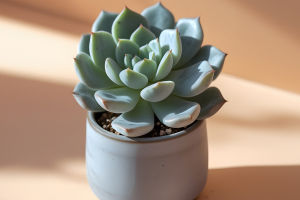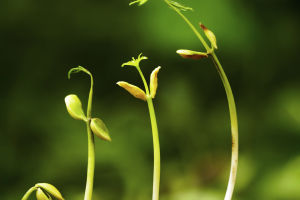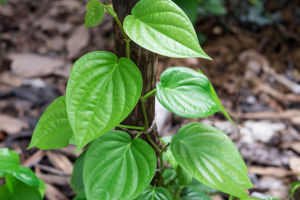In recent years, we've seen a growing awareness about sustainability in every industry—from fashion to food, and now even in the world of floral design.
As the planet faces increasing environmental challenges, it's only natural that we, as a society, are beginning to rethink how we approach beauty in our lives.
Flowers, often seen as symbols of nature's wonder, are now at the forefront of the conversation about eco-friendly practices.
In this article, we'll explore how floral designers are embracing sustainability, incorporating local flowers and natural materials to reduce their environmental impact while still creating beautiful, meaningful arrangements. We'll also look at how we, as consumers and creators, can make mindful choices that help support the planet's well-being.
The Rise of Eco-friendly Floral Design
The trend towards sustainability in floral design is not just a passing phase—it's becoming an essential part of how the industry operates. From flower farmers to event planners, florists are increasingly turning to eco-friendly practices that minimize waste and reduce the carbon footprint associated with floral arrangements.
The rise of this movement has been spurred by a collective desire to preserve our environment and acknowledge the impact of the floral industry on ecosystems.
We, as consumers, are more aware than ever about the environmental cost of our purchases. Traditional florals often involve the use of imported flowers, excessive plastic, and unsustainable packaging—all contributing to increased waste. Fortunately, the shift towards sustainable florals brings us closer to a more harmonious relationship with nature, where beauty doesn't come at the expense of the Earth's health.
Local Flowers: Reducing the Carbon Footprint
One of the simplest yet most effective ways to make floral design more sustainable is by choosing locally sourced flowers. When flowers are grown locally, there's a significant reduction in transportation costs and carbon emissions—two major contributors to environmental degradation. By supporting local flower growers, we're not only reducing the carbon footprint but also boosting the local economy.
Local flowers, often grown seasonally, are also better suited to the climate, making them more resilient and easier to grow. This practice supports biodiversity by encouraging the use of native plants, which are crucial for maintaining healthy ecosystems. As consumers, choosing locally grown flowers is one of the easiest ways we can help create a sustainable floral industry.
Natural Materials: Moving Away from Plastic
The flower industry has long been dependent on plastic, whether it's in the form of wraps, pots, or floral foam. However, the negative environmental impact of plastic is becoming increasingly apparent, leading many florists to look for more sustainable alternatives. The good news is that there are now a wide range of natural materials that can be used in place of plastic.
For example, instead of using floral foam (a non-biodegradable material often used to hold flowers in place), florists are turning to more sustainable options like chicken wire, moss, or even natural twigs. These materials can be easily recycled or composted, significantly reducing the waste produced by floral arrangements. Similarly, flower wraps can be replaced with reusable materials such as burlap or even paper, making the entire process more eco-friendly.
Recycling and Upcycling: Giving Flowers a Second Life
Another aspect of sustainability in floral design is recycling and upcycling. After a floral arrangement has served its purpose—whether in a wedding, a corporate event, or as a gift—many flowers can be repurposed, rather than thrown away. For example, we can preserve flowers by drying or pressing them to create lasting mementos or craft items. This reduces waste while allowing us to cherish the flowers for much longer.
Florists are also finding creative ways to upcycle flowers. Rather than discarding old arrangements, some designers create new pieces from leftover blooms, turning what might have been wasted into something beautiful once again. Upcycling not only reduces waste but also promotes a culture of resourcefulness and creativity within the floral design community.
Educating Consumers: The Role We Play
As consumers, we have a vital role to play in encouraging sustainability in the floral industry. By making conscious decisions about the flowers we purchase and how we dispose of them, we can all contribute to reducing the environmental impact of floral design. Whether it's opting for local flowers, choosing eco-friendly wrapping materials, or supporting florists who prioritize sustainable practices, every choice matters.
Education is key, and by sharing information about sustainable floral design, we can inspire others to think critically about their own choices. The more we learn about the impact of floral design on the environment, the better equipped we are to make decisions that help protect our planet.
Conclusion: A Greener, More Beautiful Future
In conclusion, sustainable floral design is a powerful way for the industry to embrace both beauty and responsibility. By focusing on local flowers, natural materials, and reducing waste, we can significantly lessen the environmental burden that the floral industry often carries. As we become more aware of the environmental challenges facing our world, it's heartening to see how the floral design community is stepping up to the plate with innovative and eco-conscious solutions.
We encourage you to join the movement and embrace sustainability in your own floral choices. Whether you're decorating your home, planning an event, or sending a gift, choosing flowers that support the environment can make a big difference. Let's work together to create a greener, more beautiful future for the planet, one petal at a time.
We'd love to hear your thoughts! How do you incorporate sustainability into your floral designs? Share your tips and experiences with us in the comments below!


